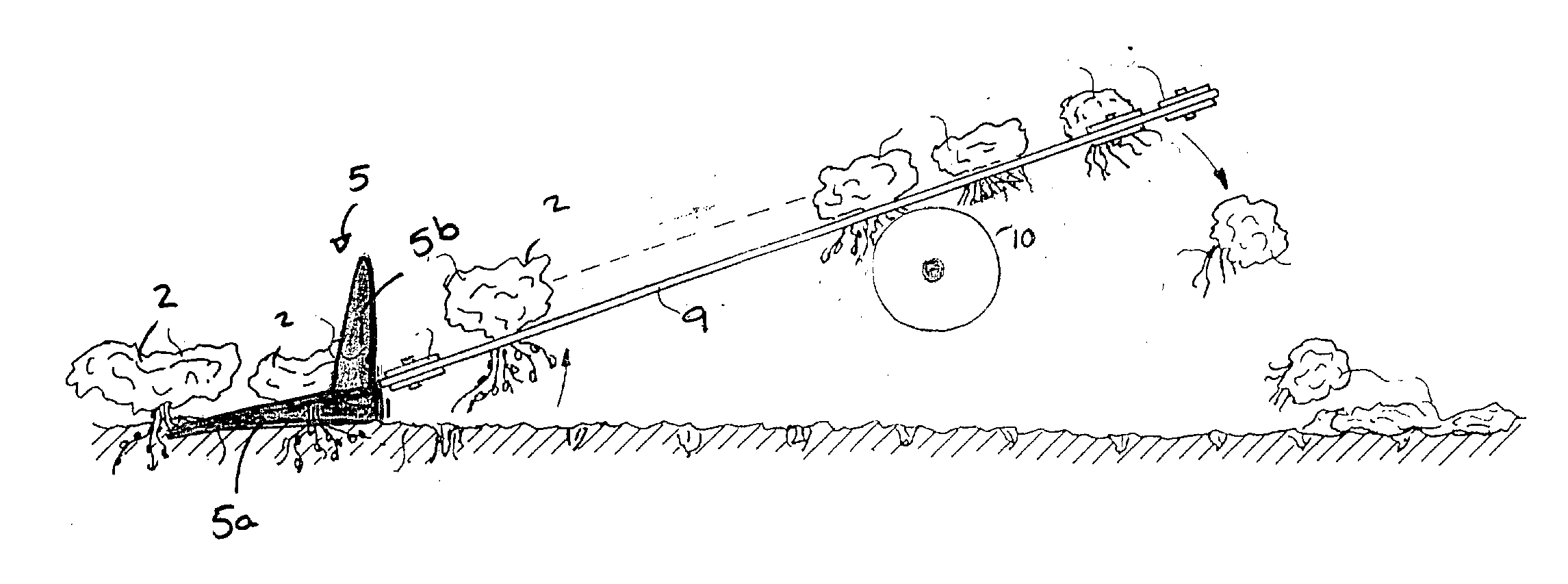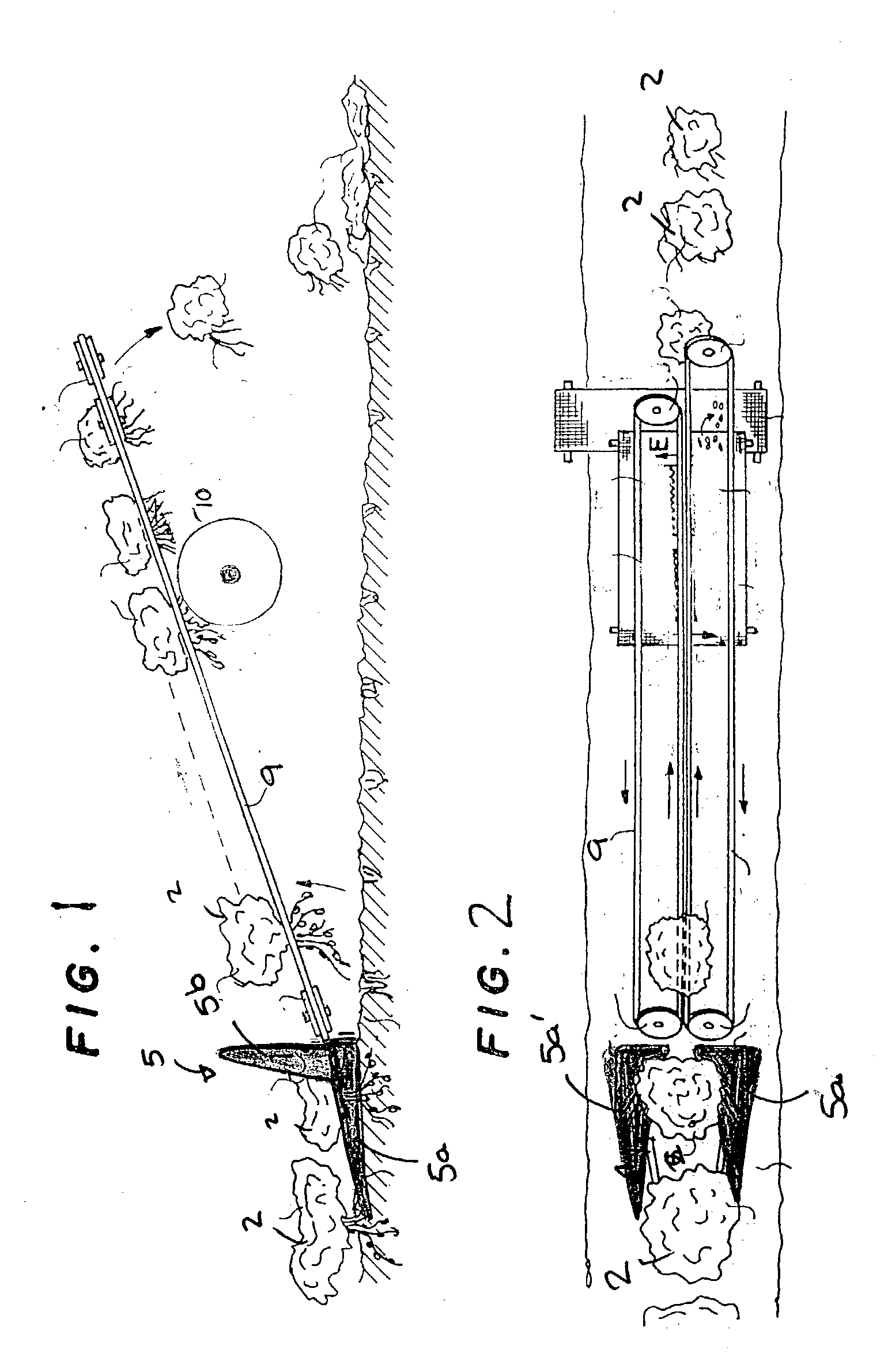Seedpod harvester
a seedpod and harvester technology, applied in the field of seedpod harvesters, can solve the problems of reducing the effective yield, affecting the harvesting effect, and affecting the harvesting effect, and consuming many man-hours of labor for manual peanut harvesting
- Summary
- Abstract
- Description
- Claims
- Application Information
AI Technical Summary
Problems solved by technology
Method used
Image
Examples
Embodiment Construction
[0022] In the device as shown in FIGS. 1-4, the present invention provides in one embodiment a foliage-bunching device 5 (also referred to herein as a seed pod harvesting apparatus) for attachment to a harvester to assist in the bunching and lifting of the plant 2 for harvesting of root crops like peanuts. The foliage-bunching device 5 includes a pair of horizontally positioned cone-shaped snouts 5a and 5a' for each discrete plant row. In one embodiment, the snouts rotate, preferably at different RPMs and at either rotation (clockwise or counterclockwise). A motor 6 is provided to cause the rotation. In one embodiment, a center shaft 7a disposed within the snout is connected to the motor 6 to provide rotation. The shaft 7a terminates at an end forming a nose 7b and has an outer covering forming the cone-shaped snout 5a. The shaft 7a is of sufficient diameter and length to support the outer covering and a coupling to the motor 6 (preferably a hydraulic fluid motor). The motor 6 may t...
PUM
 Login to View More
Login to View More Abstract
Description
Claims
Application Information
 Login to View More
Login to View More - R&D
- Intellectual Property
- Life Sciences
- Materials
- Tech Scout
- Unparalleled Data Quality
- Higher Quality Content
- 60% Fewer Hallucinations
Browse by: Latest US Patents, China's latest patents, Technical Efficacy Thesaurus, Application Domain, Technology Topic, Popular Technical Reports.
© 2025 PatSnap. All rights reserved.Legal|Privacy policy|Modern Slavery Act Transparency Statement|Sitemap|About US| Contact US: help@patsnap.com



